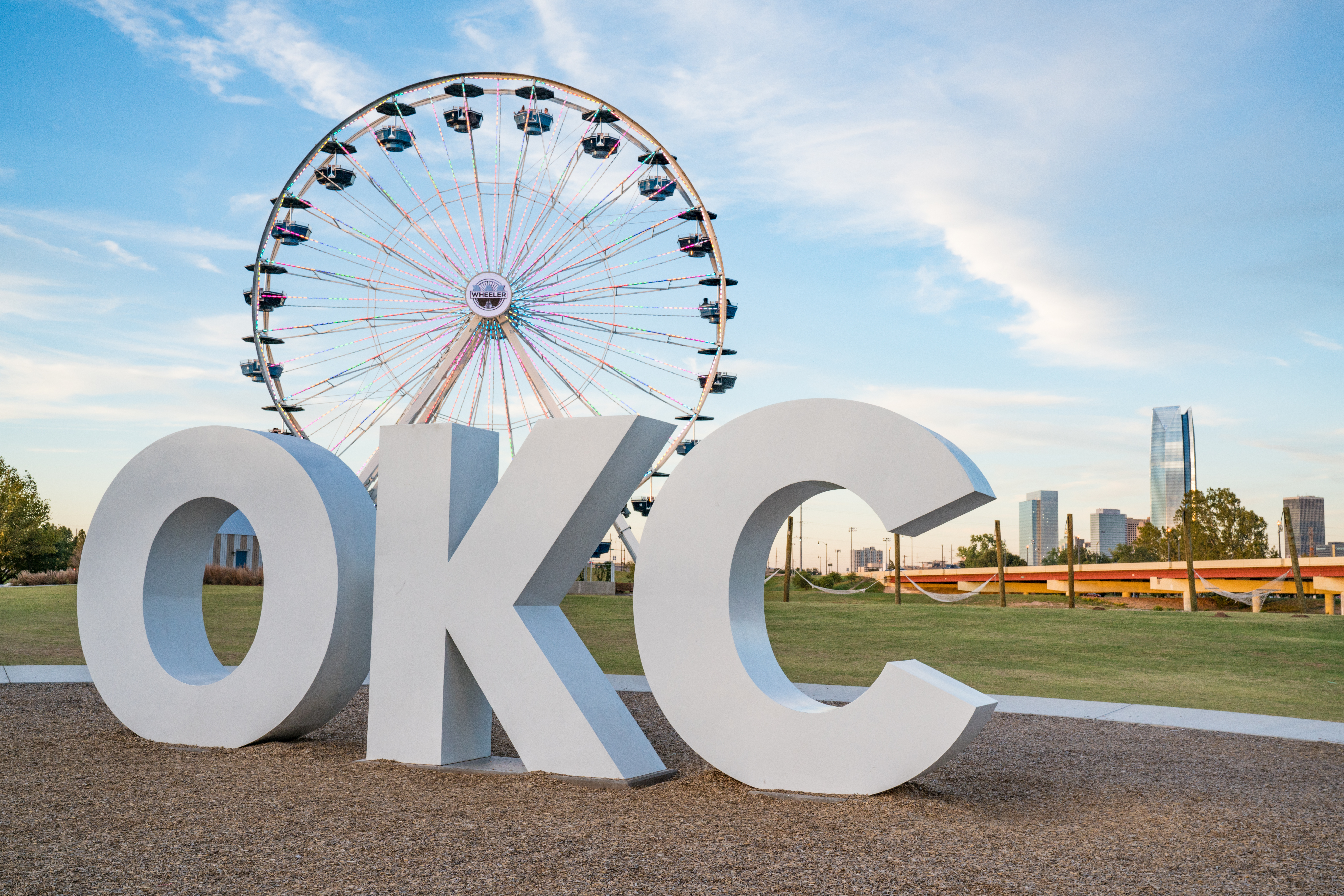average rent
average occupancy rate
ytd sales volume
YoY rent change
yoy occupancy change
ytd individual transactions
QUARTERLY DEMAND
YTD: -567
QUARTERLY COMPLETIONS
YTD: 272


In Q2 2023, the Oklahoma City apartment market witnessed a rebound to positive territory for demand, with renters absorbing over 355 net units. Although slightly below the seasonal average, this nonetheless underscores the resilience of the local apartment market.
Positive net absorption was observed in six out of eight submarkets in Oklahoma City. The Intown Oklahoma City submarket led the way, with renters absorbing 156 units, which surpassed the 129 units that were delivered in the same quarter.
In Q2 2023, Oklahoma City’s apartment inventory grew by 129 units, with the Intown Oklahoma City submarket accounting for all of these new units.
Recent years have seen a more restrained approach to new apartment development in Oklahoma City compared to other sunbelt markets. Over the past five years, inventory expansion has not exceeded 1.4% in any quarter, with the annual average number of delivered units totaling 927.
According to RealPage, projections for the overall Oklahoma City apartment market suggest sustained demand over the next four quarters, with an anticipated absorption of 1,152 units, signifying a steady market outlook for the upcoming period.
North Central Oklahoma City and Edmond/Logan County submarkets are expected to be significant demand hotspots, with projected annual demand of 388 and 231 units, respectively.
Over the next four quarters, the Oklahoma City apartment market is poised to further expand its inventory, with an addition of 1,125 units, slightly above the historical average.
The North Central Oklahoma City submarket is set to make a significant contribution to this new supply, with an expected addition of 455 units, which account for 40% of all units anticipated for delivery in the coming year.
In Q2 2023, there was good news for apartment operators and investors in Oklahoma City as rental demand surged back into positive territory. This rebound bolstered the occupancy rate by 20 basis points quarter-to-quarter, to reach 93.3%. While this is still lower than the occupancy rate in the same quarter of the previous year, it does interrupt a trend of four straight quarters of declining occupancy. Little variance was observed between the average occupancy rates of Class A and B properties, at 93.7% and 93.8% respectively. Historically lagging behind its Class A and B counterparts, Class C properties posted an average occupancy rate of 91.7%. At a submarket level, Norman/Moore topped the list with an occupancy rate of 95.1%, while the growing West Oklahoma City submarket reported the lowest rate at 91.0%.
In the second quarter of this year, the annual rent growth in Oklahoma City measured 2.2%, translating to an average rent of $989. Despite heavy moderation from the double-digit gains of last year, it’s noteworthy that Oklahoma City continues to maintain a steady lead above its pre-pandemic historical average growth rate of 1.3%, even as many markets revert to their long-term averages or dip below. Class C properties experienced the highest annual increase at 4.8%, outperforming Class B at 1.7% and Class A at 1.4%. This outperformance of Class C properties suggests that in recent quarters, renters in Oklahoma City have been seeking more cost-efficient options. Submarket performance varied, with East Oklahoma City leading at 4.7%. In contrast, Intown Oklahoma City lagged at -0.1%, likely due to increased competition from a surge in supply added to the inventory in the past 24 months.
| Submarket | Average Occupancy | Annual Occupancy Change | Average Monthly Rent | Annual Rent Change |
|---|---|---|---|---|
| Intown Oklahoma City | 94.1% | -1.6% | $1,334 | -0.1% |
| North Central Oklahoma City | 93.6% | -2.7% | $1,053 | 2.1% |
| East Oklahoma City | 92.3% | -3.0% | $928 | 4.7% |
| Southwest Oklahoma City | 91.7% | -3.6% | $868 | 3.5% |
| West Oklahoma City | 91.0% | -4.3% | $818 | 4.7% |
| Northwest Oklahoma City | 93.6% | -2.3% | $957 | 1.1% |
| Edmond/Logan County | 93.9% | -2.6% | $1,105 | 0.0% |
| Norman/Moore | 95.1% | -1.6% | $990 | 2.9% |
| Oklahoma City | 93.3% | -2.7% | $989 | 2.2% |
Units Under Construction
Units UC Delivering In the Next 4 Quarters
Despite a decrease in the number of transactions in the first half of 2023, sales activity in Oklahoma City’s conventional multifamily property market has remained resilient. In total, 13 such properties changed hands, down from 23 during the same period last year. However, the overall volume of trades only declined by 15% compared to the first half of 2022, amounting to a preliminary total of $177.4 million for the first half of 2023.
* Trailing 4Q average PPU
* Preliminary Data from RCA – Individual conventional transaction $2.5M +
In May 2023, the Oklahoma City metro area showcased solid job growth, adding a net total of 22,400 new positions as reported by the Bureau of Labor Statistics (BLS). This represented a job growth rate of 3.4%, a consistent upswing from the rate reported in the previous year. The area saw notable job gains across a variety of sectors, with the leisure and hospitality sector leading by adding 7,000 new jobs, translating to a substantial growth rate of 9.3%. This was closely followed by the construction sector, which added 2,100 jobs, marking a growth rate of 6.6%. Oklahoma City’s unemployment rate in May stood impressively low at 2.7%, outperforming the national average of 3.4%. The region continues to exhibit strong economic performance with growth spanning multiple job sectors and wages in line with the national average.
May Annual Jobs Created
May 23 Employment growth
May 23 Unemployment rate
3.4% us may rate
Change from May 2022 to May 2023:
7,000
Percent Change:
9.3%
Change from May 2022 to May 2023:
6,600
Percent Change:
6.5%
Change from May 2022 to May 2023:
2,100
Percent Change:
6.6%
Change from May 2022 to May 2023:
1,800
Percent Change:
1.4%
Change from May 2022 to May 2023:
1,700
Percent Change:
1.9%
| Sector | Change from May 2022 to May 2023 | Percent Change |
|---|---|---|
| Leisure and hospitality | 7,000 | 9.30% |
| Education and health services | 6,600 | 6.50% |
| Construction | 2,100 | 6.60% |
| Government | 1800 | 1.4 |
| Professional and business services | 1,700 | 1.90% |
| Manufacturing | 1,200 | 3.50% |
| Trade, transportation, and utilities | 1,000 | 0.80% |
| Mining and logging | 600 | 5.80% |
| Other services | 600 | 2.10% |
| Information | 100 | 1.70% |
| Financial activities | -300 | -0.80% |



Looking towards the remainder of 2023 and beyond, the Oklahoma City apartment market is set for an encouraging period of growth and stability. Although some fluctuation in absorption is anticipated, demand remains solid, as reflected by a positive net absorption in Q2 2023 and robust projected growth in key submarkets like North Central Oklahoma City and Edmond/Logan County. An expanding inventory is also on the horizon for the next four quarters, driven by a significant contribution from the North Central Oklahoma City submarket. Although this introduces more units into the market, the increase represents a manageable 1.2% of Oklahoma City’s existing inventory, suggesting that market saturation is unlikely. Rental growth, though moderate, continues to outpace pre-pandemic levels, hinting at the market’s resilience. Investor interest remains strong, reflected in a resilient transaction activity despite a decrease in the number of transactions. Furthermore, the city’s job growth remains sturdy, with the leisure and hospitality and construction sectors leading the way. Amid a backdrop of stable economic growth, controlled construction expansion, and favorable employment trends, the market is well-equipped to sustain demand and navigate potential challenges, offering potential for continued resilience and growth.








